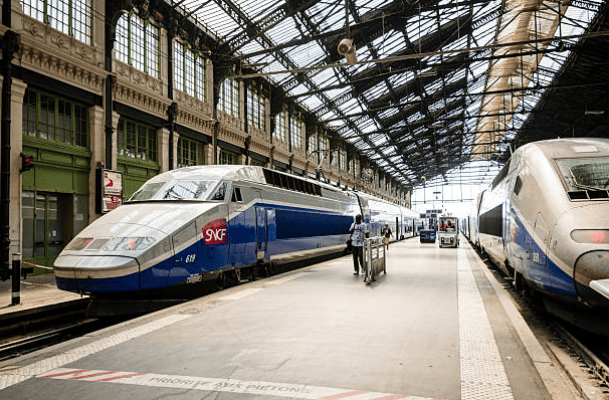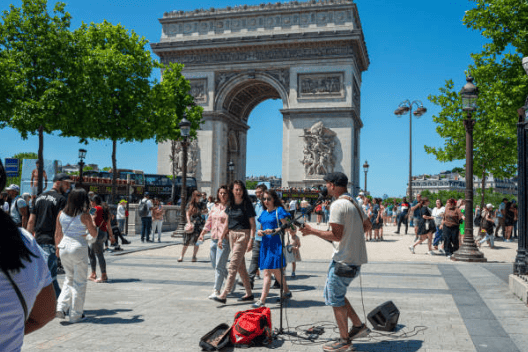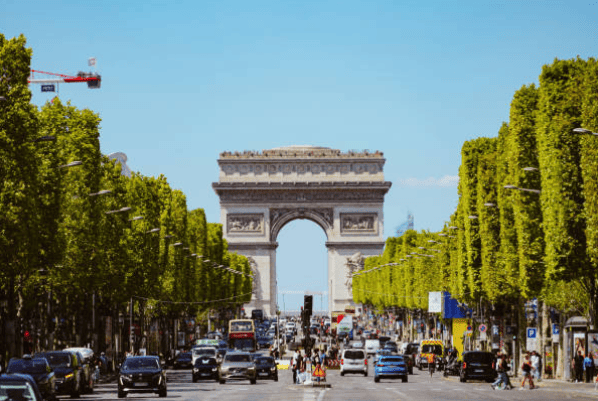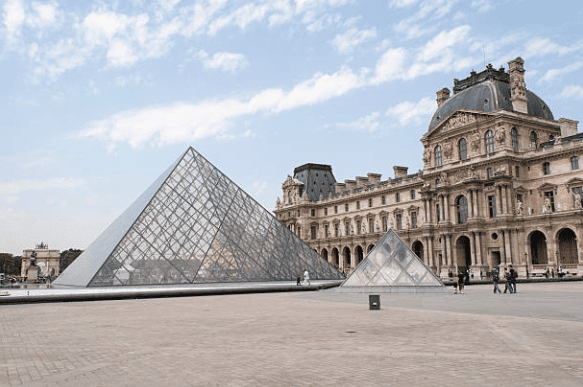
There was a time when I could only dream of seeing the famous Eiffel Tower in Paris. The desire became even stronger after watching the movie Eiffel, I’m in Love, which was a hit a few years back. I imagined how romantic the Eiffel Tower must look at night, with all its lights shining brightly.
People say Paris is one of the most romantic cities in the world, but I didn’t know much about it beyond the Eiffel Tower and the French language, which sounds unique and challenging to me. The Eiffel Tower became a must-see place on my European travel list.
That dream felt closer when I had the chance to visit the Netherlands. I was thrilled about going to Paris, as it wasn’t too far from Amsterdam. Finally, in August 2012, I set foot in Paris, the city often called the most romantic in the world. I took the Thalys high-speed train from Amsterdam to Gare du Nord in Paris, with a ticket costing 79 euros for the three-hour journey. The train was very comfortable, equipped with free Wi-Fi, making the trip enjoyable, and snacks and drinks were complimentary.

It’s true what they say: Paris is beautiful, charming, and romantic. Most buildings in this city are white, with a distinctive architectural style. Traffic is similar to other big cities, but Paris has an excellent metro system. It’s hard to imagine an entire network of trains running beneath the city, and sometimes you can feel vibrations under your feet—not an earthquake, just the rumble of passing trains.
Paris is stunning, but not everything about it is perfect. The city is a magnet for people from all over, attracting many who are struggling to make a living. Many of them are undocumented, and without steady work, some end up busking, begging, or selling souvenirs around the tourist areas.

There are also a lot of homeless people and beggars, so it’s important to stay alert when exploring Paris. Despite these issues, Paris remains a city worth visiting if you’re traveling in Europe.
Here are some of the places I visited in Paris:
1. Eiffel Tower

Named after its designer, Gustave Eiffel, this is the tallest structure in Paris. Built in 1889, it was the tallest building in the world until 1930 when the Chrysler Building in New York surpassed it.
2. Arc de Triomphe

One of the most famous monuments in Paris, the Arc de Triomphe sits on the Chaillot Hill at the center of a five-way intersection. Napoleon ordered its construction in 1806 after his victory at Austerlitz. The monument’s foundation took two years to build, and in 1810, Napoleon could see the wooden framework rising. Although its architect, Jean Chalgrin, passed away in 1811, work resumed under Jean-Nicolas Huyot. Construction halted during the Bourbon Restoration but resumed under King Louis-Philippe in 1833-36. Napoleon’s remains passed under the arch on December 15, 1840, en route to his final resting place at the Invalides. An Unknown Soldier’s Tomb was later added to honor WWI victims on January 28, 1921.
3. Basilica of Sacré-Cœur

This was my first time entering a church. As a Muslim, I had never set foot in one before. The basilica’s architecture is magnificent, but unfortunately, photography inside was prohibited.
4. Notre Dame Cathedral

This Roman Catholic cathedral sits on a small island in the Seine River. Built in a Gothic style, it was the first cathedral in Paris, started in 1163 under Bishop Maurice de Sully and completed in the 1240s. The “Love Lock Bridge” nearby is fascinating, where people attach locks as symbols of their love and toss the keys into the river, hoping their love will last forever.
5. Louvre Museum

Located in the former Louvre Palace, which was originally a 12th-century fortress, the museum opened on August 10, 1793, with 537 paintings, mainly from confiscated church and royal properties. It briefly closed in 1796 due to structural issues but reopened in 1801. The collection grew under Napoleon and was later renamed the Musée Napoléon. Many works seized by Napoleon’s forces were returned after his defeat at Waterloo. Under Louis XVIII, Charles X, and the Second French Empire, the museum continued to expand, reaching 20,000 pieces. By 2008, the collection was organized into eight departments, featuring artifacts from ancient Egypt, Near Eastern antiquities, Greek and Roman art, Islamic art, sculptures, decorative arts, paintings, prints, and drawings.
Exploring Paris in the summer was delightful. Perhaps I made some people envious, especially those who dream of visiting the world’s fashion capital, often regarded as the most romantic city. For me, this was simply a dream come true, and I fully embraced my good fortune.

Can you be more specific about the content of your article? After reading it, I still have some doubts. Hope you can help me.